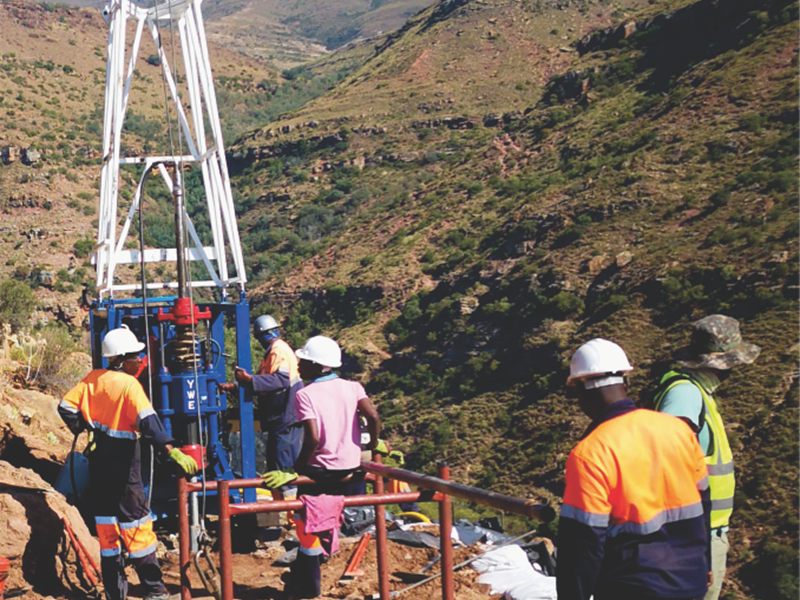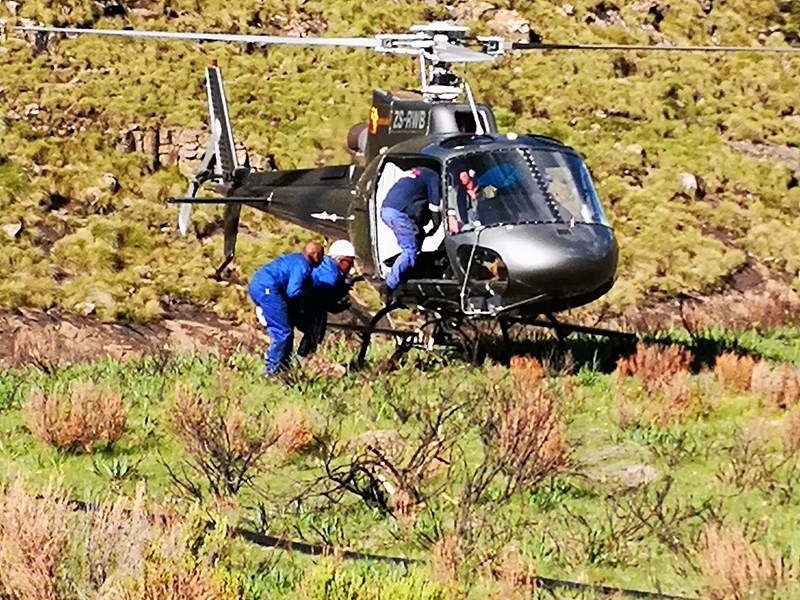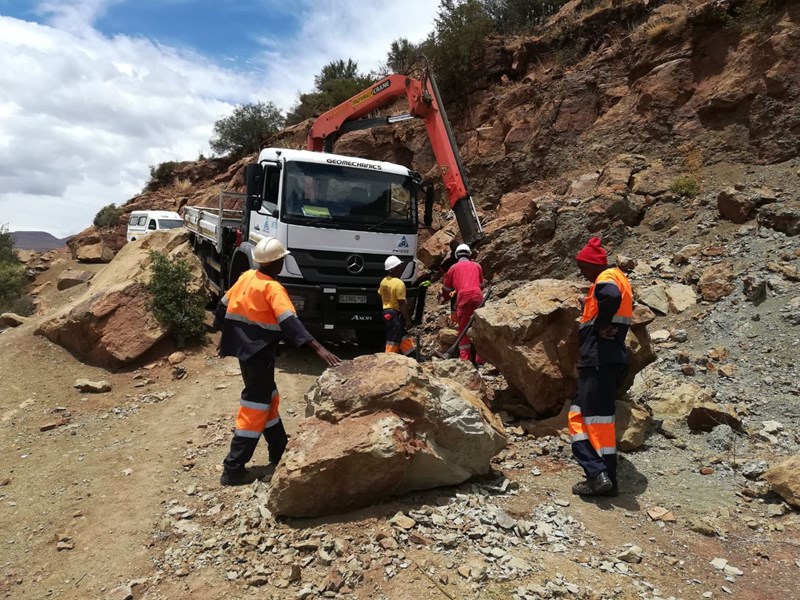Lesotho LHDA Dam Investigations - Oxbow and Senqu

Geomechanics was contracted by the Lesotho Highlands Development Authority (LHDA) to drill and test two potential dam sites for the hydropower component of Phase II of the Lesotho Highlands Water Project. These sites are in the Oxbow and Senqu areas.
The Oxbow site, managed by Espee Van Huyssteen, was an investigation for the potential dam site on the Malibamatso River, quarries for construction materials and the pipeline to the ‘Muela dam. Using three YWE D90 drill rigs, Geomechanics drilled 18 boreholes up to 75m deep including Lugeon testing.
The site is in a pristine environment in an extremely remote area of the Lesotho highlands, 6km from the nearest road. Environmental restrictions required the use of a helicopter to get drill rigs and equipment to drilling positions, and to relocate the crews from camp to drill positions and back daily.
The Senqu B site, managed by Dean MacDonald, was an investigation for a potential dam site on the Senqu river near the village of Tsoelike in the Qachas Nek area. Using three WYE D90 rigs, Geomechanics drilled 23 boreholes up to 100m deep including Lugeon and falling head testing.
Due to the extremely rugged and steep nature of the Senqu River valley, the helicopter was required to access most of the drilling positions.
Geomechanics has been managing helicopter assisted sites since 1996 and so is armed with experienced helicopter ground crew. Before each move to a new position, our ground crew disassembled and packaged each machine into 500kg pay loads. The long line specialist pilot from our sub-contractors, Skyhorse Aviation, using a Eurocopter AS350 Ecureuil helicopter, moved the packages onto drill platforms built into the side of the mountain and then the ground crew reassembled the machines in position.
The use of same helicopter for both the Oxbow and Senqu B sites required some serious logistical planning. Careful scheduling of position and crew moves, extensive pre-preparation of the rigs for flying and the pre-building of drill platforms were all essential to optimise the use of the helicopter hours and prevent delays to the programme. For example, on days when the helicopter was at Senqu, the crews at Oxbow had to walk 1,5 hours to work and back.
It total, the project required 80 hours and 37 minutes of flying time.
The weather also has an impact on the management of projects in the Lesotho highlands. The high altitudes mean that extreme weather conditions can happen at any time. Temperatures vary between -4 and 30 degrees Celsius and snow is a possibility at any time - even in the summer months.
Production plans were affected by severe thunderstorms, with lightning and heavy rains requiring regular re-planning of schedules.
Staff accommodation is also affected by the environmental conditions. A special camp was built using the Geomechanics insulated flatpack containers for accommodation, kitchens and ablutions.
Geomechanics employed people from the local communities in various capacities; cleaners, security; road and platform building, and Community Liaison Officers, thereby ensuring that the local community benefitted financially from the project.
The project was successfully and safely completed within the contract period of 3 months between December 2018 and March 2019, including the Christmas break.


